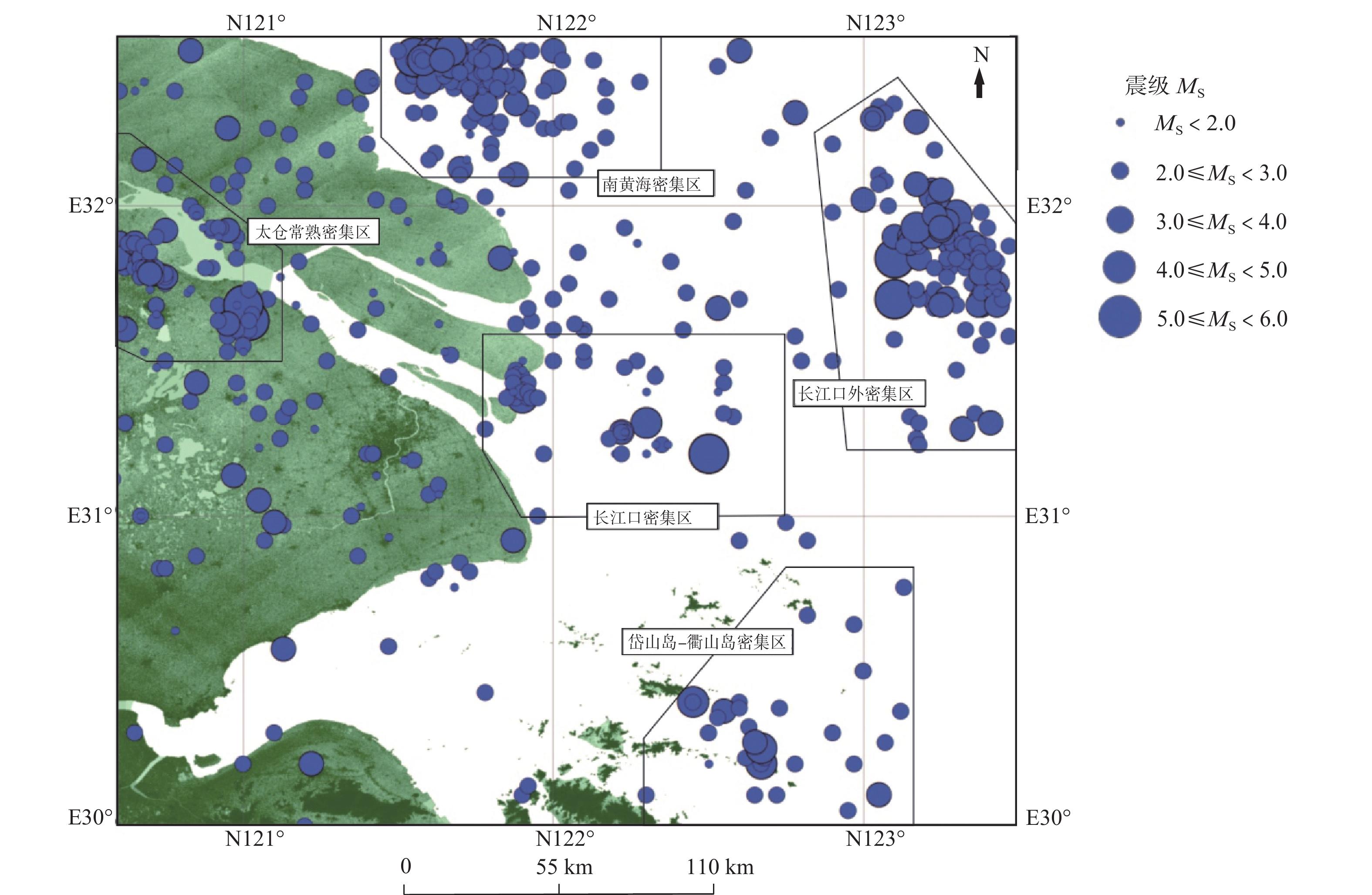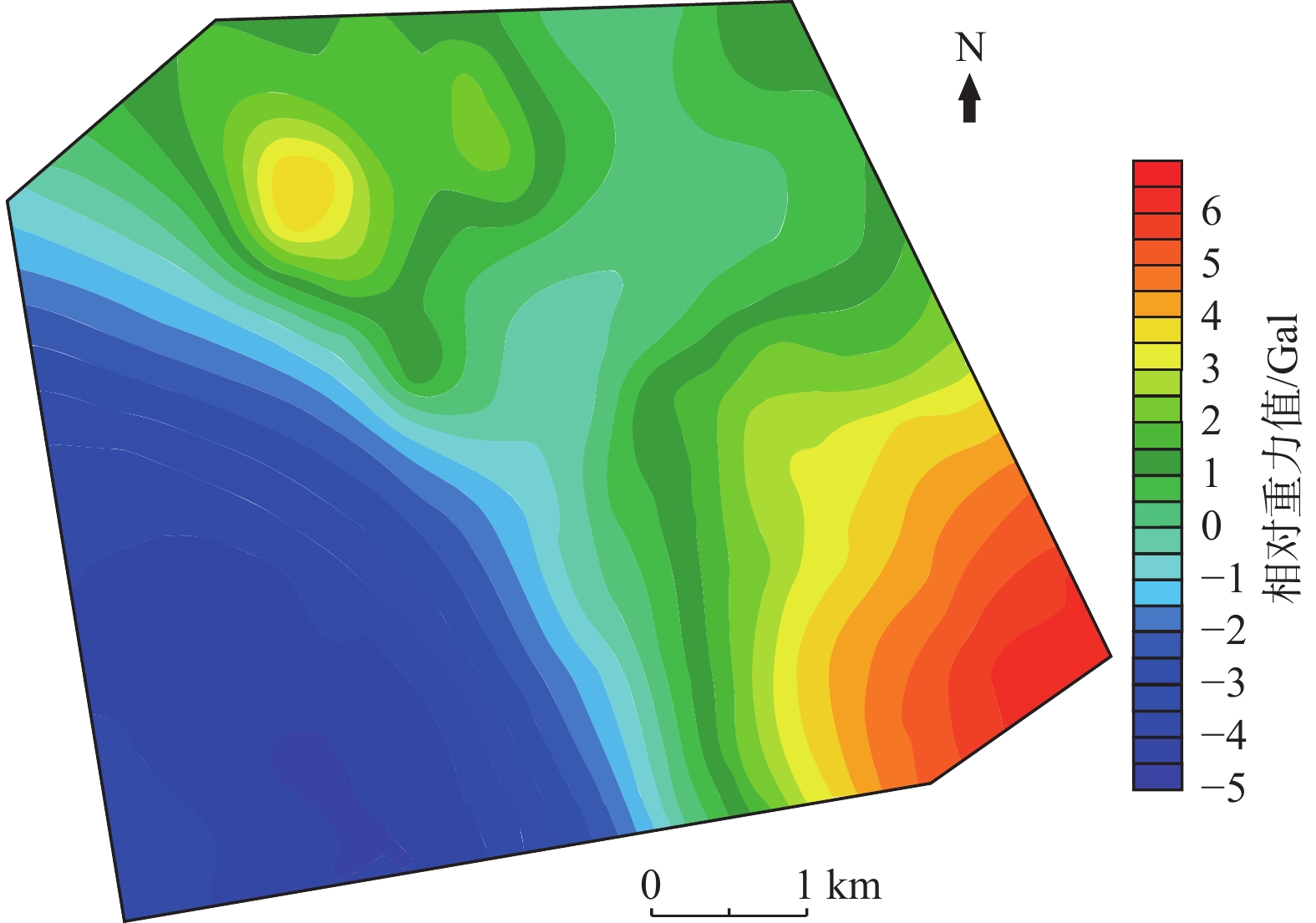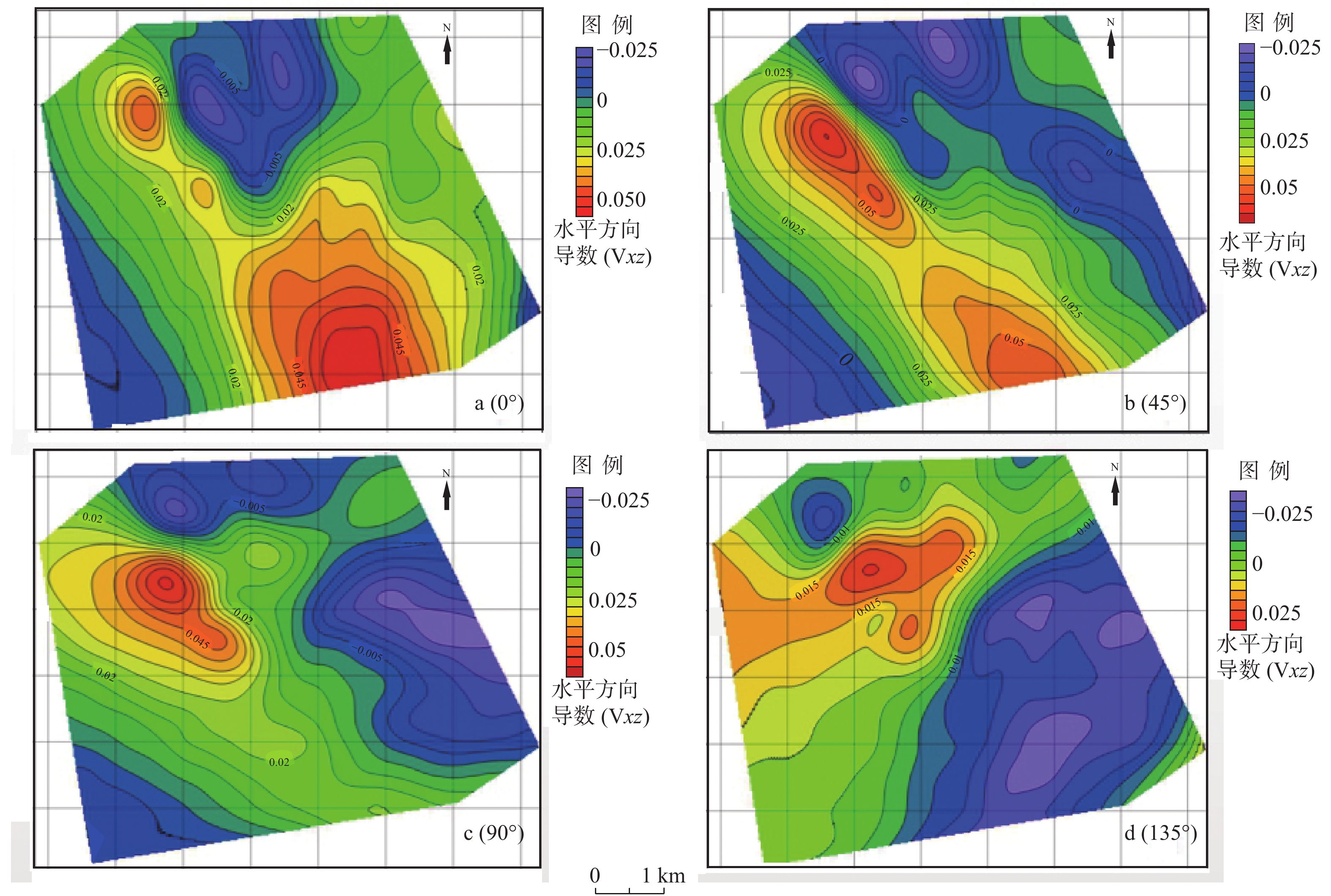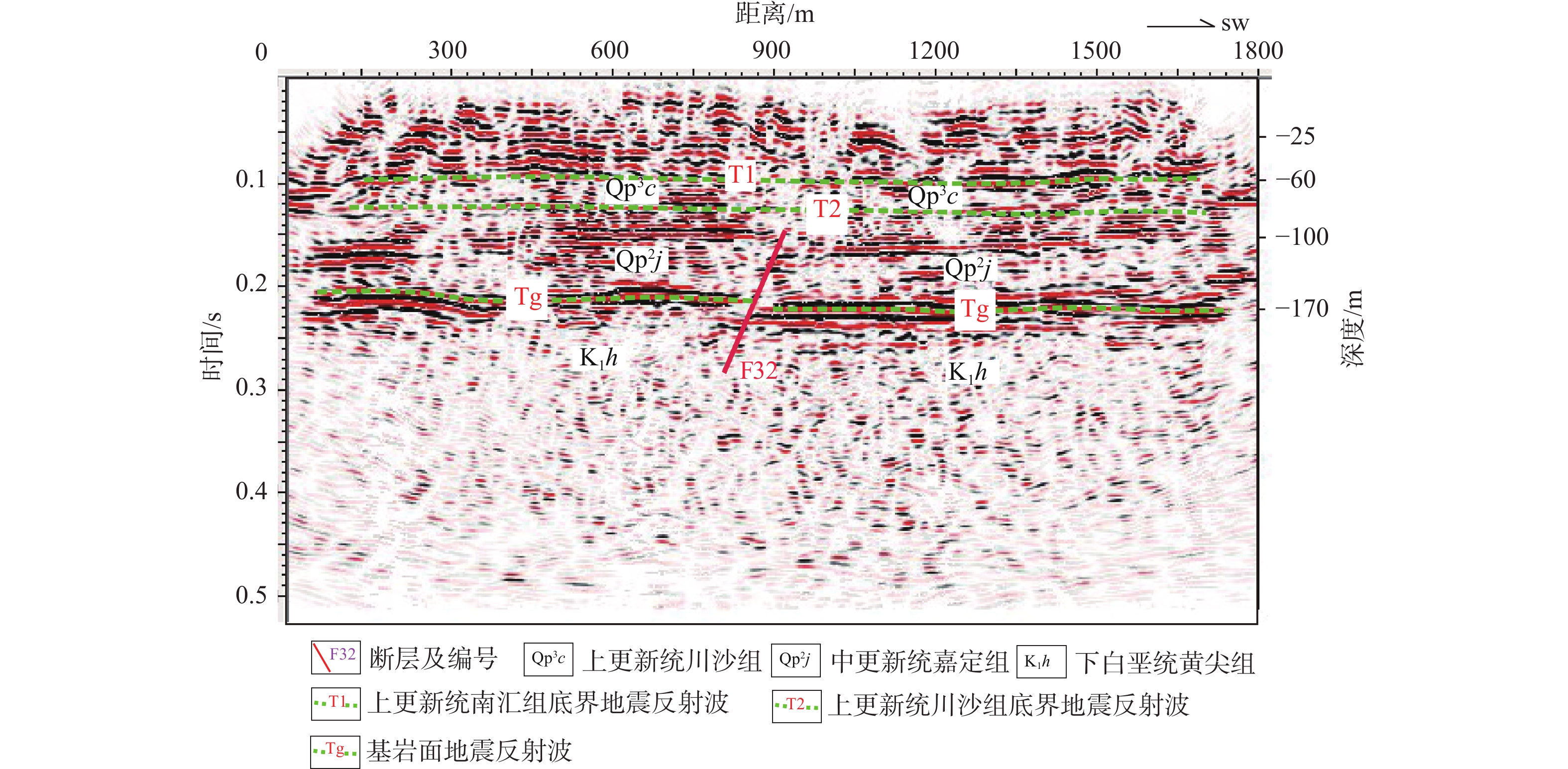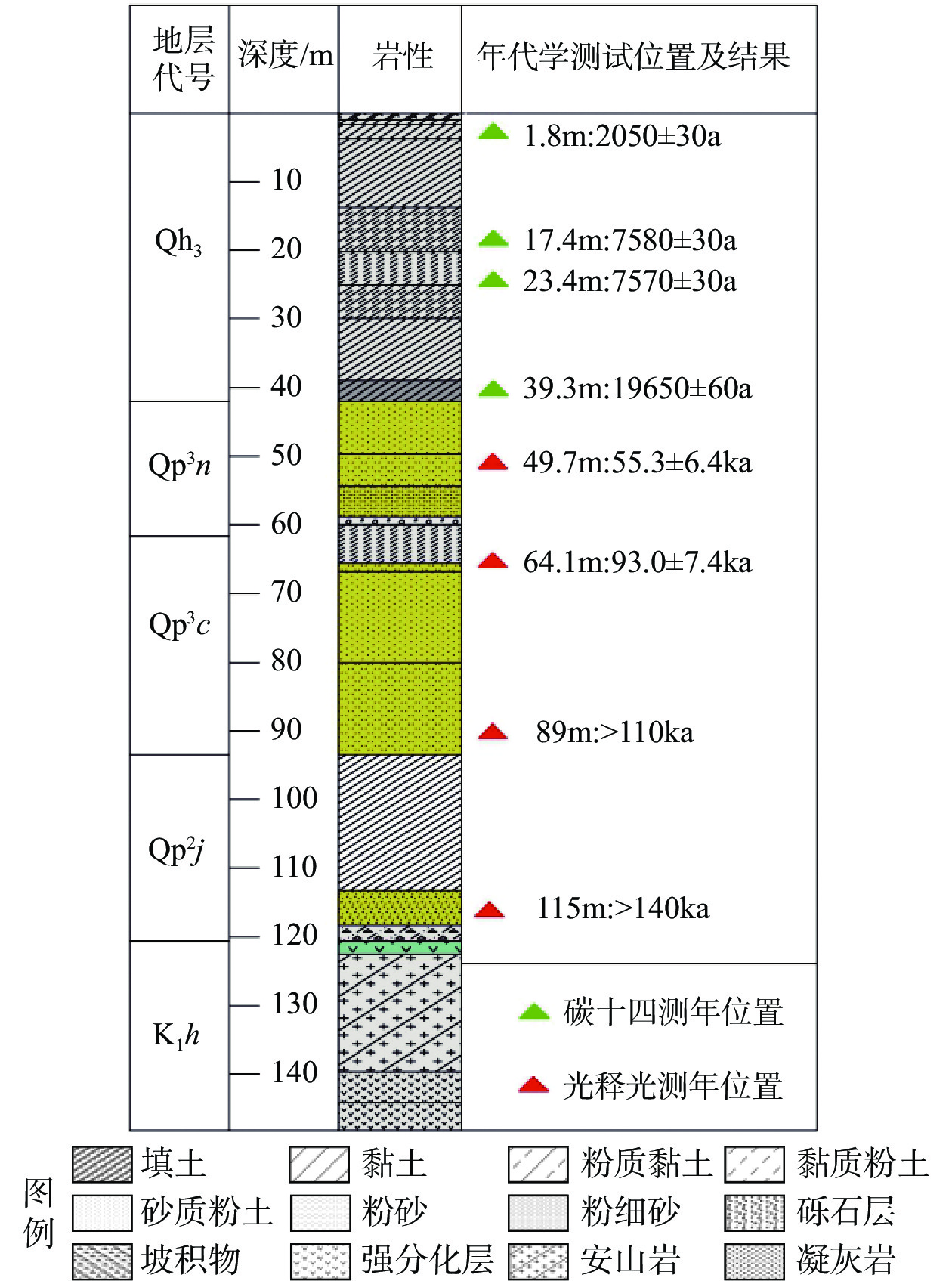The activity characteristics and comprehensive geophysical evidence of the Zhangyan–Jinshanwei concealed active fault in Shanghai, China
-
摘要:
上海城市隐伏断层十分发育,第四纪以来沉积了数百米厚的松散沉积层,受限于其特大城市复杂高干扰环境背景,隐伏断层的探测与活动性特征研究难以取得理想的效果,城市地质安全面临严重风险。文章通过高精度重力面积测量、高分辨率浅层地震勘探等地球物理探测方法,结合周边钻孔地层分层、地应力和年代学测试分析(碳十四和光释光),对张堰−金山卫断层第四纪和现今的活动性开展了探测与研究。结果显示,该断层空间上具有较好的延展性,断层行迹在布格重力异常和地震时间剖面上均有较好的地球物理证据反映。研究认为张堰−金山卫断层为逆冲断层,同时具有继承性和新生性活动特征,总体走向为北西向315°,倾向南西,基岩面断距约10 m,上断点已错断至第四系中更新统内,最新活动时代为中更新世,目前北西向地应力状态易于发生张扭性活动,该断层现今活动性依然需持续关注。此次研究探测思路与成果可为类似城市开展隐伏活动断层探测及活动性分析提供借鉴和参考。
Abstract:The concealed faults in the urban area of Shanghai are well-developed, accumulating several hundred meters of loose sediment layers since the Quaternary. Hindered by the complex and highly disturbed urban environment, the detection and characterization of concealed faults face challenges, posing significant geological risks for urban safety. This study employs high-precision gravity area measurements, high-resolution shallow seismic exploration, and geophysical exploration methods. It integrates geological stratification from surrounding boreholes, stress, and chronostratigraphy analyses (C14 and optically stimulated luminescence) to investigate the Quaternary and current activity of the Zhangyan–Jinshanwei fault. Results show that the fault exhibits good spatial continuity, with evidence reflected in Bouguer gravity anomalies and seismic time profiles. The Zhangyan–Jinshanwei fault is identified as a thrust fault with inherited and newly developed activity characteristics. Its overall trend is northwestward at 315°, dipping southwest, with a fault distance of approximately 10 meters along the bedrock surface. The upper fault point has been displaced to the mid-Pleistocene in the Quaternary. The most recent active period occurred during the mid-Pleistocene, and the current northwestward stress state makes the fault susceptible to extensional and torsional activities. Continuous attention is required for the ongoing activity of this fault. This study's detection approach and findings can serve as a reference for similar urban concealed active fault detection and activity analysis.
-

-
表 1 工作区主要地层物性特征一览表
Table 1. List of physical properties of main strata in the work area
地层及岩性 密度/
(g/cm3)纵波速度/
(m/s)第四纪黏土 1.64~1.98 827~884 第四纪砂层 1.78~2.03 1184~1268 第四纪砂砾层 1.87~2.16 1312~1680 中生代安山岩 2.30~2.70 1640~2260 中生代岩浆岩 2.61~2.81 1640~2260 表 2 地应力测量取值结果表
Table 2. Results of ground stress measurement values
序号 中心深度/m 主应力值/MPa SH/Sh SH方向/(°) SH Sh Sv 1 143.6 9.54 5.41 2.85 1.76 NW42° 2 145.5 10.77 5.88 2.90 1.83 NE80° 3 155.5 10.62 5.75 3.17 1.85 NW56° 4 157.5 10.10 5.61 3.22 1.80 NW62° 5 164.5 11.81 6.38 3.40 1.85 6 170.0 12.91 6.96 3.55 1.85 NW46° 7 176.3 12.29 6.53 3.72 1.88 注:SH为最大水平主应力,MPa;Sh为最小水平主应力,MPa;Sv为根据上覆岩石埋深计算的垂直主应力,MPa;KHh=SH/Sh,为水平主应力比值,表征地应力状态 -
[1] BAO H Y, GUO Z F, ZHANG L L, et al. , 2013. Tectonic dynamics of eastern china since the formation of the pacific plate[J]. Advances in Earth Science, 28(3): 337-346. (in Chinese with English abstract)
[2] CAMERON M, 2009. Time depth conversion and seismic velocity analysis based on time offset velocity[J]. MA F Z, trans. Petroleum Geophysics, 7(1): 48-52. (in Chinese)
[3] CHENG J Y, XIONG S Q, YIN C X, 2013. Geological and geophysical interpretation of the bouguer gravity map of China[J]. Geological Review, 29(2): 181-189. (in Chinese with English abstract)
[4] DENG Q D, XU X W, ZHANG X K, et al. , 2003. Methods and techniques for surveying and prospecting active faults in urban areas[J]. Earth Science Frontiers, 10(1): 93-104. (in Chinese)
[5] DENG Q D, LU Z X, YANG Z E, 2007. Remarks on urban active faults exploration and associated activity assessment[J]. Seismology and Geology, 29(2): 189-200. (in Chinese)
[6] GU P T, 2006. Thinking of getotectonic attribution on Jinshan Group in Shanghai Area[J]. Shanghai Land & Resources, 27(4): 10-13. (in Chinese with English abstract)
[7] GU Q P, XU H G, ZHAO Q G, 2015. The seismic exploration method for buried active faults in thick sediment area: A case study of Qiaobei-Suqian fault[J]. Geophysical and Geochemical Exploration, 39(2): 408-415. (in Chinese with English abstract)
[8] GUAN X P, 1991. An effective and simple approach of subsurface inversion using parker's equation[J]. Computing Techniques for Geophysical and Geochemical Exploration, 13(3): 236-242. (in Chinese with English abstract)
[9] GUO T, HU J S, YIN K M, et al. , 2019. Gravity interface inversion method based on three-dimensional seismic peeling and its application[J]. Geophysical and Geochemical Exploration, 2019, 43(5): 1090-1096. (in Chinese with English abstract)
[10] GUO Y, LI J S. 2022. Application of High Density Electrical Method in Rock Exploration of Badong Formation in Fengjie Area[J]. Railway Investigation and Surveying, 48(6): 71-76. (in Chinese with English abstract)
[11] HUO E J, LIU C S, ZHANG Z Q, et al. , 2013. Study on hidden faults and their activity in Shanghai City[M]. Beijing: Seismological Press. (in Chinese)
[12] LEI X D, QI B S, GUAN W, et al. , 2021. Research on the faults identification based on gravity anomaly in Beijing plain[J]. Chinese Journal of Geophysics, 64(4): 1253-1265. (in Chinese with English abstract)
[13] LI C B, JIANG R, ZENG J W, et al. , 2022. Construction of bedrock geological model in shallow overburden area: Application of a joint inversion of gravity anomaly and borehole data in the Tanlu Fault Zone, Sihong area[J]. Geological Bulletin of China, 41(2-3): 425-435. (in Chinese with English abstract)
[14] LI C Y, WANG Y P, WANG Z C, 2007. Some analyses on the relation between the upper offset point and the latest activity times of buried faults in cities of eastern China: taking the Xingtai and Tangshan earthquake regions as an example[J]. Seismology and Geology, 29(2): 431-445. (in Chinese with English abstract)
[15] LI S Z, CAO X Z, WANG G Z, et al. , 2019. Meso-cenozoic tectonic evolution and plate reconstruction of the Pacific plate[J]. Journal of Geomechanics, 25(5): 642-677. (in Chinese with English abstract)
[16] LI W L, TIAN Q N, LIU S F, et al. , 2018. Progress in the study of shallow seismic exploration technology in urban areas[J]. Geophysical and Geochemical Exploration, 42(4): 653-661. (in Chinese with English abstract)
[17] LIU X L, FAN J, ZHU J W, et al. Critical slowing-down characteristics of brittle fracture of rock bridge under uniaxial compression [J]. Water Resources and Hydropower Engineering, 2022, 53( 3) : 166-175. (in Chinese with English abstract)
[18] LU J M, WANG Y G, 2009. Principle of seismic exploration[M]. 3rd ed. Dongying: China University of Petroleum Press. (in Chinese)
[19] MA S, WANG H W, XU S S, et al. , 2021. High-precision gravity is used to probe the structural characteristics of Zhangyan-Jinshanwei floor and the distribution of buried faults[J]. Advances in Geosciences, 11(8): 1024-1032. (in Chinese with English abstract)
[20] MENG X H, GUO L H, CHEN Z X, et al. , 2009. A method for gravity anomaly separation based on preferential continuation and its application[J]. Applied Geophysics, 6(3): 217-225. doi: 10.1007/s11770-009-0025-y
[21] QI B S, FENG C J, TANG C X, et al. , 2018. Study on the regional crustal stability in Zhangjiakou and its adjacent areas[J]. Urban Geology, 13(3): 1-14. (in Chinese with English abstract)
[22] QIU J B, LI X, 2007. Quaternary stratigraphy and sedimentary environment in Shanghai[M]. Shanghai: Shanghai Scientific & Technical Publishers. (in Chinese)
[23] Shanghai Bureau of Geology and Mineral Resources, 1988. Shanghai regional geology[M]. Beijing: Geological Publishing House. (in Chinese)
[24] SHANG Y J, JIN W J, WANG G J, et al. , 2018. Comprehensive analysis of geophysical results via different exploration methods in granites of Daya Bay Neutrino tunnel[J]. Progress in Geophysics, 33(4): 1687-1699. (in Chinese with English abstract)
[25] SHEN B, 1994. Application of precision gravity measurement[J]. Earth Science, 1: 8-30. (in Chinese)
[26] SONG C H, SHI G, WU H, et al. , 2021. Application of seismic detection by spark source for concealed faults in Shanghai urban water network area[J]. Journal of Geomechanics, 27(6): 938-948. (in Chinese with English abstract)
[27] TAN C X, SUN Y, WU S R, et al. , 2009. A consideration on regional crustal stability assessment after MS8.0 Wenchuan strong earthquake in China[J]. Journal of Geomechanics, 15(2): 142-150. (in Chinese with English abstract)
[28] WANG J, GAO Z W, LIU F X, et al. , 2020. Study on Tangshan-Hejian-Cixian earthquake fault zone by shallow seismic exploration method[J]. Seismology and Geology, 42(4): 866-880. (in Chinese with English abstract)
[29] WANG Q S, 2003. Gravitology[M]. Beijing: Seismological Press. (in Chinese)
[30] WANG R J, 2010. Application and development of geophysical exploration technology in Shanghai[M]. Shanghai: Shanghai Scientific & Technical Publishers. (in Chinese)
[31] WEI P , REN X H, JIAO H X, et al. Study on optimization inversion of initial in-situ stress field within slate area [J] . Water Resources and Hydropower Engineering, 2022, 53(1): 190- 198. (in Chinese with English abstract)
[32] WU Z H, 2019. The definition and classification of active faults: history, current status and progress[J]. Acta Geoscientica Sinica, 40(5): 661-697. (in Chinese with English abstract)
[33] WU Z H, ZHANG H P, 2021. Chief editor’s address[J]. Journal of Geomechanics, 27(2): 157-158. (in Chinese)
[34] XU W M, CHEN S, SHI L, 2014. Seismic activity and gravity anomaly characteristics of Yutian in Xinjiang and surrounding regions[J]. Earth Science, 39(12): 1831-1841. (in Chinese with English abstract)
[35] XU X W, 2006. Active faults, associated earthquake disaster distribution and policy for disaster reduction[J]. Technology for Earthquake Disaster Prevention, 1(1): 7-14. (in Chinese with English abstract)
[36] XU X W, YU G H, RAN Y K, et al. , 2015. An introduction to active faults in China: findings of active faults in 20 cities[M]. Beijing: Seismological Press. (in Chinese)
[37] YAO X, 2014. Development and problems of regional crustal stability assessment study companying with discussion of the specification compilation[J]. Geological Review, 60(1): 22-30. (in Chinese with English abstract)
[38] ZHANG F X, JIANG Z K, ZHANG F Q, et al. , 2007. Calculating upward continuation of gravity anomalies using cosine transfrom[J]. Progress in Geophysics, 22(1): 57-62. (in Chinese with English abstract)
[39] ZHANG H, SHI G, WU H, et al. , 2020. In-situ stress measurement in the shallow basement of the Shanghai area and its structural geological significance[J]. Journal of Geomechanics, 26(4): 583-594. (in Chinese with English abstract)
[40] ZHANG H, SHI G, WU H, et al. , 2021. Quaternary activity of the Luodian-Zhoupu buried fault in the shanghai region: integrated exploration and research[J]. Journal of Geomechanics, 27(2): 267-279. (in Chinese with English abstract)
[41] ZHANG H L, ZHANG J, 1996. On the geological characteristics of Zhangyan copper deposit in Jinshan county of Shanghai City[J]. Shanghai Geology(4): 9-15. (in Chinese with English abstract)
[42] ZHANG H L, 1999. Shanghai geological and mineral records[M]. Shanghai: Shanghai Academy of Social Sciences Press. (in Chinese)
[43] ZHANG H L, ZHANG L, XIA Y Y, 2014. The application of shallow seismic prospecting methods to urban active fault detection and risk assessment[J]. Chinese Journal of Engineering Geophysics, 11(1): 85-88. (in Chinese with English abstract)
[44] ZHANG Z Q, LIU C S, WANG F, 2004. Preliminary study on relation of fault activity and seismicity in the Shanghai region[J]. Earthquake Research in China, 20(2): 143-151. (in Chinese with English abstract)
[45] ZHOU C, ZHANG S, REN J L, et al. 2022. Application of OCTEM in the Preliminary Investigation of Railway Engineering[J]. Railway Investigation and Surveying, 48(6): 65-71. (in Chinese with English abstract)
[46] 包汉勇, 郭战峰, 张罗磊, 等, 2013. 太平洋板块形成以来的中国东部构造动力学背景[J]. 地球科学进展, 28(03): 337-346. doi: 10.11867/j.issn.1001-8166.2013.03.0337
[47] CAMERON M, 2009. 基于时间偏移速度的时深转换和地震速度分析[J]. 马方正, 译. 油气地球物理, 7(1): 48-52.
[48] 程家印, 熊寿庆, 尹春霞, 1983. 全国重力图的地质-地球物理解释[J]. 地质论评, 29(2): 181-189. doi: 10.3321/j.issn:0371-5736.1983.02.010
[49] 邓起东, 卢造勋, 杨主恩, 2007. 城市活动断层探测和断层活动性评价问题[J]. 地震地质, 29(2): 189-200. doi: 10.3969/j.issn.0253-4967.2007.02.001
[50] 邓起东‚徐锡伟‚张先康‚等. 2003. 城市活动断裂探测的方法和技术[J]. 地学前缘, 10(1): 93-104.
[51] 顾澎涛, 2006. 关于上海地区金山群大地构造属性的思考[J]. 上海地质, 27(4): 10-13.
[52] 顾勤平, 许汉刚, 赵启光, 2015. 厚覆盖层地区隐伏活断层探测的地震方法技术: 以桥北镇-宿迁断层为例[J]. 物探与化探, 39(2): 408-415.
[53] 关小平, 1991. 利用Parker公式反演界面的一种有效方法[J]. 物探化探计算技术, 13(3): 236-242.
[54] 郭涛, 胡加山, 尹克敏, 等, 2019. 基于三维地震剥层的重力界面反演方法及应用[J]. 物探与化探, 43(5): 1090-1096.
[55] 郭宇, 李均山. 2022. 高密度电法在奉节地区巴东组岩层勘察中的应用[J]. 铁道勘察, 48(6): 71-76.
[56] 火恩杰, 刘昌森, 章振铨, 等, 2004. 上海市隐伏断裂及其活动性研究[M]. 北京: 地震出版社.
[57] 雷晓东, 戚帮申, 关伟, 等, 2021. 北京平原区断裂构造重力异常识别研究[J]. 地球物理学报, 64(4): 1253-1265.
[58] 李长波, 蒋仁, 曾剑威, 等, 2022. 重力约束反演构建郯庐断裂带泗洪浅覆盖区隐伏基岩地质模型[J]. 地质通报, 41(2-3): 425-435. doi: 10.12097/j.issn.1671-2552.2022.2-3.020
[59] 李传友, 汪一鹏, 王志才, 2007. 中国东部城市地区隐伏断裂上断点与最新活动时代关系的初步分析: 以邢台、唐山地震区为例[J]. 地震地质, 29(2): 431-445.
[60] 李三忠, 曹现志, 王光增, 等, 2019. 太平洋板块中—新生代构造演化及板块重建[J]. 地质力学学报, 25(05): 642-677.
[61] 李万伦, 田黔宁, 刘素芳, 等, 2018. 城市浅层地震勘探技术进展[J]. 物探与化探, 42(04): 653-661.
[62] 刘先林, 范杰, 朱觉文, 等. 单轴压缩下岩桥脆性断裂的临界慢化特征[J]. 水利水电技术(中英文), 2022, 53(3): 166-175.
[63] 陆基孟, 王永刚, 2009. 地震勘探原理[M]. 3版. 东营: 中国石油大学出版社.
[64] 马森, 王浩文, 许少帅, 等, 2021. 利用高精度重力探查张堰–金山卫基底结构特征与隐伏断裂分布[J]. 地球科学前沿, 11(8): 1024-1032.
[65] 孟小红, 郭良辉, 陈召曦, 等, 2009. 基于优选延拓的重力异常分离方法及其应用(英文)[J]. 应用地球物理, 6(3): 217-225.
[66] 戚帮申, 丰成君, 谭成轩, 等, 2018. 张家口及邻区地壳稳定性研究[J]. 城市地质, 13(3): 1-14. doi: 10.3969/j.issn.1007-1903.2018.03.001
[67] 邱金波, 李晓, 2007. 上海市第四纪地层与沉积环境[M]. 上海: 上海科学技术出版社.
[68] 上海地质矿产局, 1988. 上海市区域地质志[R]. 北京: 地质出版社.
[69] 尚彦军, 金维浚, 王光杰, 等, 2018. 大亚湾中微子试验隧道工程不同物探方法探测结果综合分析[J]. 地球物理学进展, 33(4): 1687-1699. doi: 10.6038/pg2018BB0148
[70] 沈博, 1994. 精密重力测量的应用[J]. 地球科学, (1): 8-30.
[71] 宋春华, 施刚, 巫虹, 等, 2021. 上海城市水网地区电火花震源地震探测隐伏断裂的应用探索[J]. 地质力学学报, 27(6): 938-948.
[72] 谭成轩, 孙叶, 吴树仁, 等, 2009. “5.12”汶川MS8.0大地震后关于我国区域地壳稳定性评价的思考[J]. 地质力学学报, 15(2): 142-150.
[73] 王继, 高战武, 刘芳晓, 等, 2020. 用浅层人工地震方法探测唐山—河间—磁县地震构造带内的活动断裂[J]. 地震地质, 42(4): 866-880.
[74] 王谦身, 2003. 重力学[M]. 北京: 地震出版社.
[75] 王仁杰, 2010. 上海地球物理勘探技术应用与发展[M]. 上海: 上海科学技术出版社.
[76] 魏鹏, 任旭华, 焦红星, 等. 板岩区初始地应力场优化反演研究[J]. 水利水电技术(中英文) , 2022, 53(1): 190-198.
[77] 吴中海, 2019. 活断层的定义与分类: 历史、现状和进展[J]. 地球学报, 40(5): 661-697.
[78] 吴中海, 张会平, 2021. 新构造与环境[J]. 地质力学学报, 27(2): 157-158.
[79] 徐伟民, 陈石, 石磊, 2014. 新疆于田及周边地区地震活动性与重力异常特征[J]. 地球科学: 中国地质大学学报, 39(12): 1831-1841.
[80] 徐锡伟, 2006. 活动断层、地震灾害与减灾对策问题[J]. 震灾防御技术, 1(1): 7-14.
[81] 徐锡伟, 于贵华, 冉勇康, 等, 2015. 中国城市活动断层概论: 20个城市活动断层探测成果[M]. 北京: 地震出版社.
[82] 姚鑫, 2014. 区域地壳稳定性评价研究进展与问题, 兼谈规范编制[J]. 地质论评, 60(1): 22-30.
[83] 张凤旭, 姜正奎, 张凤琴, 等, 2007. 利用余弦变换计算重力异常的向上延拓[J]. 地球物理学进展, 22(1): 57-62.
[84] 张浩, 施刚, 巫虹, 等, 2020. 上海地区浅部地应力测量及其构造地质意义分析[J]. 地质力学学报, 26(4): 583-594.
[85] 张浩, 施刚, 巫虹, 等, 2021. 上海罗店-周浦隐伏断裂第四纪活动性综合探测与研究[J]. 地质力学学报, 27(2): 267-279. doi: 10.12090/j.issn.1006-6616.2021.27.02.025
[86] 张宏良, 张洁, 1996. 上海金山张堰铜矿床地质特征[J]. 上海地质, 4: 9-15.
[87] 张宏良, 1999. 上海地质矿产志[M]. 上海: 上海社会科学院出版社.
[88] 张慧利, 张琳, 夏媛媛, 2014. 浅层地震勘探在城市活断层探测与危险性评价中的应用[J]. 工程地球物理学报, 11(1): 85-88. doi: 10.3969/j.issn.1672-7940.2014.01.016
[89] 章振铨, 刘昌森, 王锋, 2004. 上海地区断裂活动性与地震关系初析[J]. 中国地震, 20(2): 143-151. doi: 10.3969/j.issn.1001-4683.2004.02.004
[90] 周超, 张硕, 任金龙, 等. 2022. OCTEM在铁路工程前期勘察中的应用[J]. 铁道勘察, 48(6): 65-71.
-



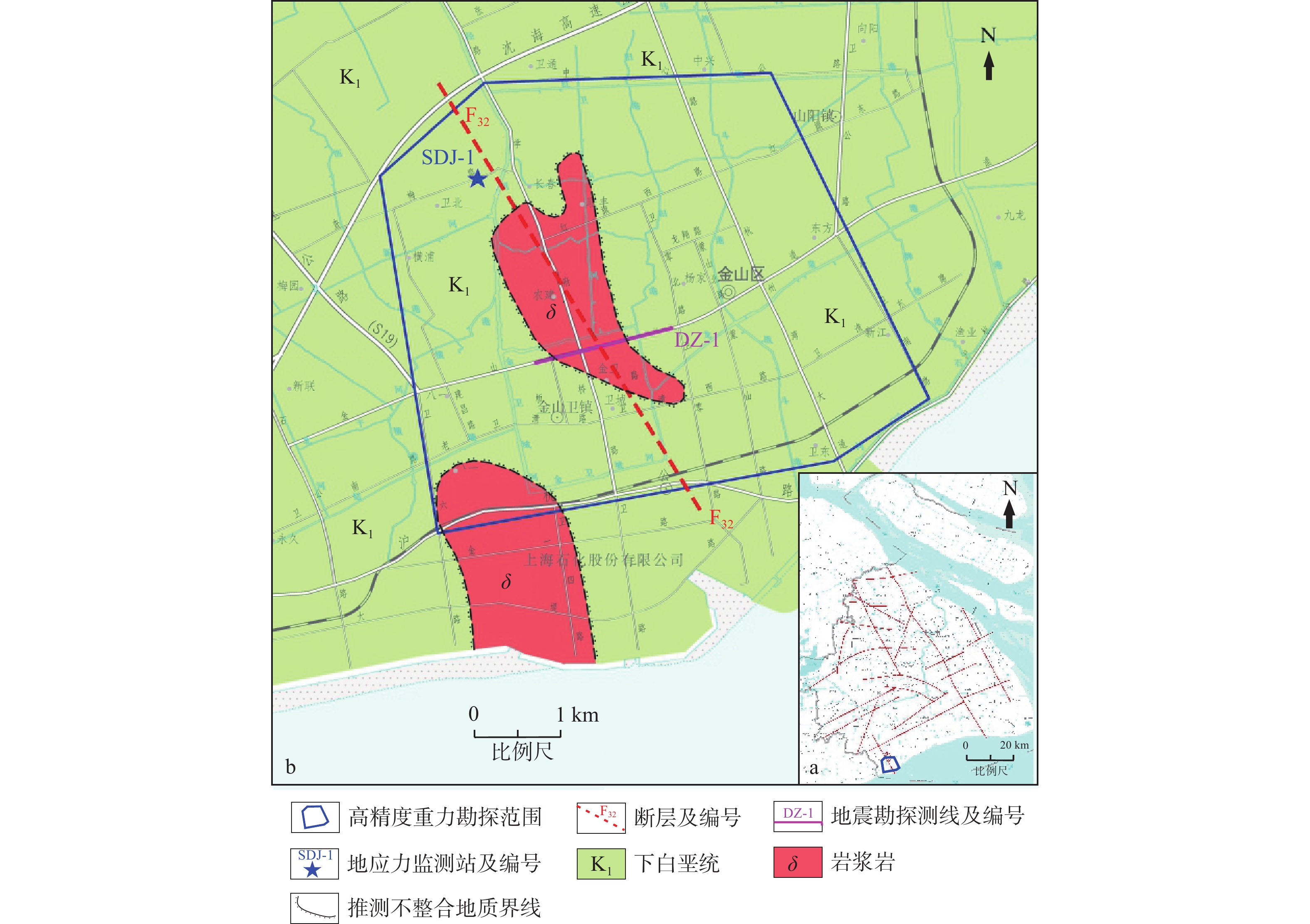
 下载:
下载:
